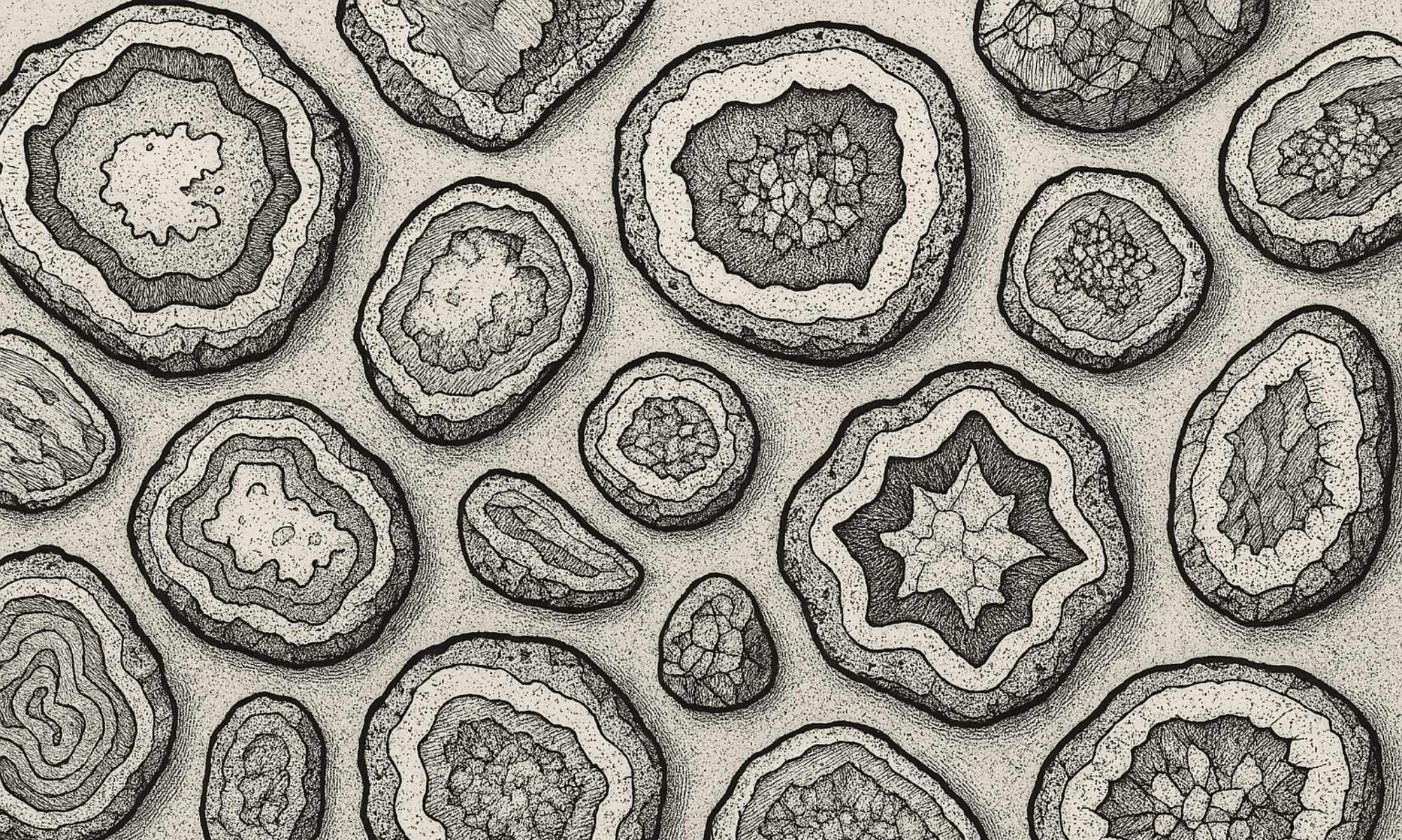The Whistler Springs Bed, located in the scenic Ochoco region of Crook County, is a classic thunderegg site known for producing nodules with strong character and varied internal features. This area is part of the broader volcanic zone that defines much of central Oregon’s rockhounding landscape, and its eggs are the result of rhyolitic flows and ash layers that formed millions of years ago. Whistler Springs has long been a favorite among collectors who appreciate thundereggs with bold matrix contrasts and distinctive agate centers.
Thundereggs from Whistler Springs often feature vibrant moss and plume agates in shades of red, yellow, gray, and orange. Some specimens display quartz or chalcedony pockets, while others reveal intricate fortification patterns or subtle opalization. The matrix is usually light gray to tan, rough in texture, and can be challenging to work with—but the interiors are well worth the effort. These eggs tend to be medium to large in size, with many showing excellent symmetry and full formation.
Unlike more commercialized dig sites, Whistler Springs retains a rugged and somewhat off-the-grid appeal. Many collectors hike in or explore logging roads to reach the site, making each successful find feel earned. The variability in color, clarity, and structure makes Whistler Springs material particularly rewarding for lapidary work, offering something different in almost every cut. For rockhounds seeking beauty and variety away from the more trafficked beds, Whistler Springs is a dependable and visually rich destination.
